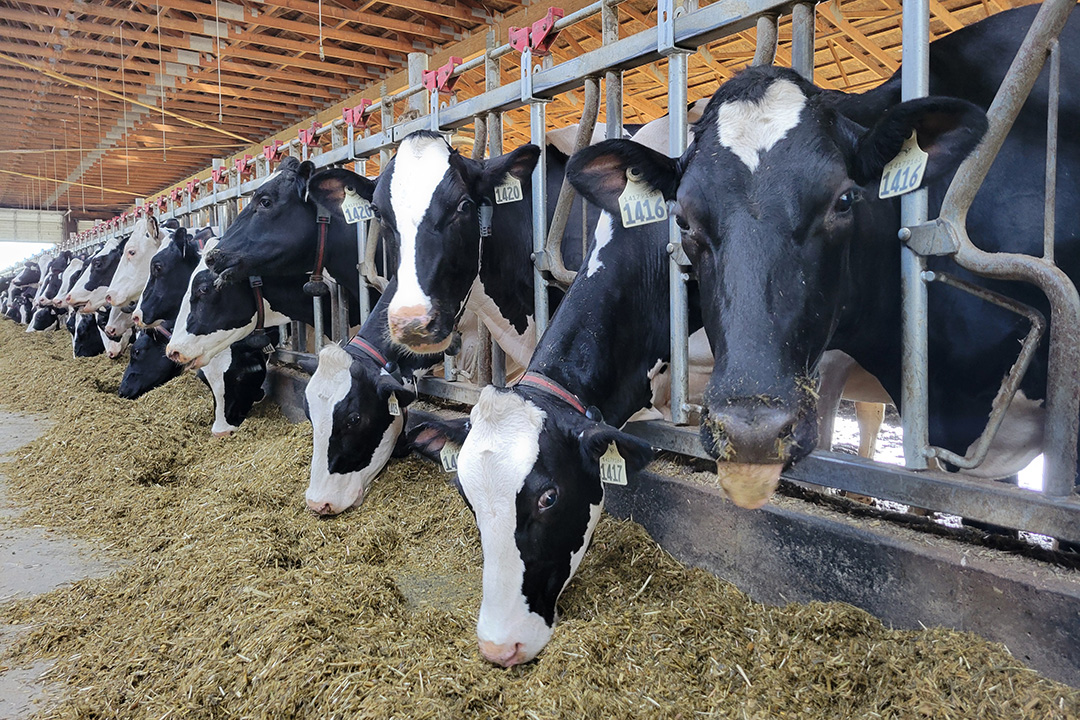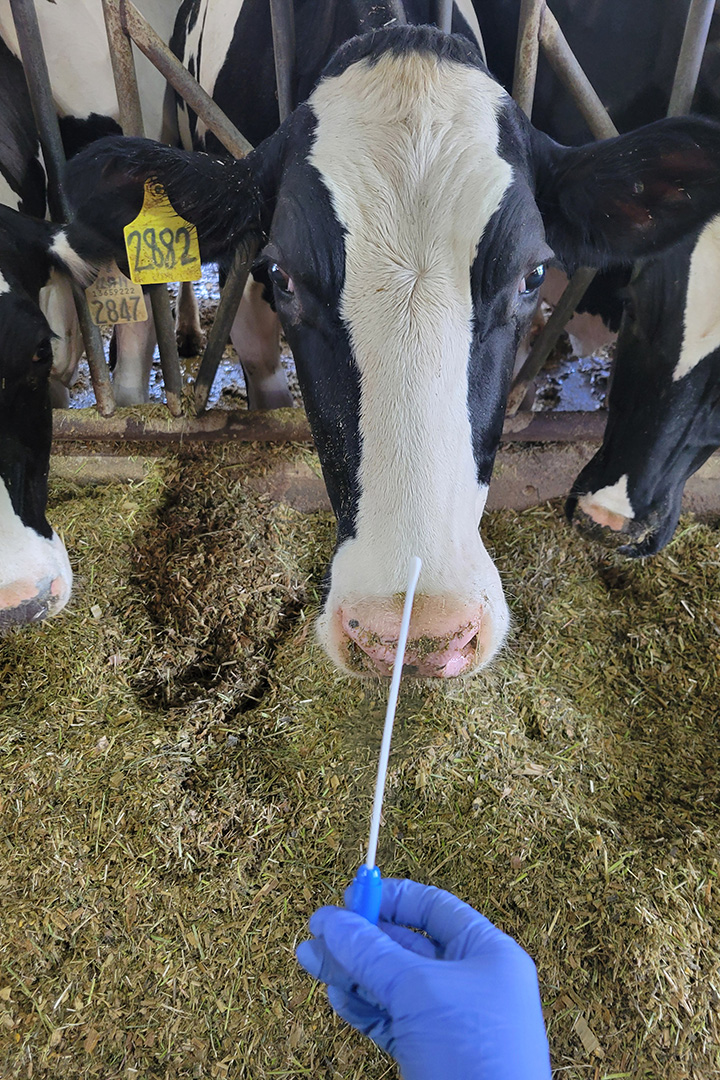
Personal ties lead scientists to bacterial research collaboration
An antimicrobial resistance research project initiated through a collaboration between British Columbia’s veterinary diagnostic laboratory and the Western College of Veterinary Medicine (WCVM) all began with a personal connection.
By Melissa LeonDr. Kazal Ghosh (DVM) and Dr. Joe Rubin (DVM, PhD) first met in 2015 when Ghosh joined Rubin’s research lab at the WCVM. Rubin, a veterinary microbiologist and professor at the veterinary college, was Ghosh’s supervisor for his University of Saskatchewan master’s program based in the WCVM’s Department of Veterinary Microbiology.
“Joe was my supervisor and mentor. Even when I moved [to B.C.], we used to have regular communication. Any time we are talking, we brainstorm new ideas,” says Ghosh, who is now a board-certified clinical veterinary microbiologist at the B.C. Animal Health Centre and an adjunct professor in the WCVM’s Department of Veterinary Microbiology.
“One day we were talking about antimicrobial resistance in a diagnostic case, then I … asked, ‘Can we do something like this?’ And then we discussed and came up with the plan.”
The plan that Ghosh and Rubin developed was a research project targeting Trueperella pyogenes, an opportunistic bacterium that has been found in cattle and other food animals. T. pyogenes can cause abscesses, respiratory infections, mastitis and abortions. It’s common in polymicrobial (mixed) infections and abscesses that can be found anywhere throughout the body.
In the past five years, Ghosh and his team at Animal Health Centre (B.C.’s provincial animal diagnostic laboratory) have seen an increasing number of T. pyogenes cases.
“What we are seeing year by year, [case numbers are] going up, which was not like that before,” explains Ghosh.
Despite the steady increase of cases, T. pyogenes is historically a neglected bacterium — mainly because it doesn’t affect humans. There’s also limited information about its antimicrobial resistance.
“Anything that causes disease in people that has a similar or closely related organism in animals will automatically have more attention paid to it, than … something like T. pyogenes, which we don’t really see in people outside of very unusual circumstances,” says Rubin.
Ghosh and Rubin’s main concern is the potential for resistance in T. pyogenes. Antimicrobial resistance is a worldwide issue that threatens both human and animal health.
“We can think about resistance as being something that differentiates the bacteria from the wild type,” explains Rubin. “It has some extra bit of extra genetic material … or it’s acquired some mechanism that allows it to survive in the presence of a drug that it wouldn’t be able to survive in the presence of without that genetic alteration.”
One way that resistance arises is when antimicrobial resistance genes are shared between bacteria. Because T. pyogenes is found in mixed infections, researchers want to know if resistance genes are being shared with other related bacteria. If that’s the case, it could potentially be a big problem, points out Ghosh.

“That’s something we are particularly interested in this project, to see if [T. pyogenes] is carrying the same resistance genes that has already been documented in other respiratory pathogens or other known cohabitating pathogens,” says Ghosh. “That’s one of the reasons why we decided to study this neglected pathogen — to see what we have in B.C. and Western Canada.”
Since there’s limited information about the antimicrobial susceptibility of T. pyogenes, Ghosh and Rubin are looking for changes in resistance over the past few years and the current state of T. pyogenes’ antimicrobial susceptibility profile. To achieve this goal, the research team is investigating diagnostic data from the last five years. In addition, the team collected 300 samples from healthy dairy cattle in British Columbia’s Fraser Valley in summer 2024.
“We just want to see if any healthy animals are having Trueperella, and if yes, are they are carrying any resistance genes?” says Ghosh.
This information is important because these resistance genes can potentially be shared between other related bacteria, some of which are already known to be carriers.
“Part of the reason why we are looking at Trueperella is [that] its role in disease is not as well defined,” says Rubin. As well, he adds that no one knows if the bacterium acts as a reservoir of resistance genes that can be shared with other, more pathogenic bacteria.
“Because this is a really unexplored organism, it potentially has benefits to go far beyond B.C. If we now understand that Trueperella can be a reservoir of resistance, it’s certainly relevant in the Lower Mainland, but it might also be relevant to other parts of Canada — or the world,” says Rubin.
“It’s kind of a fundamental question of the role of Trueperella in bovine disease and other species and highlighting that might help people in other regions to better treat their animals.”
The team’s initial work on T. pyogenes sets up an ongoing project for a new graduate student (co-supervised by Rubin and Ghosh) who will begin working on analyzing diagnostic isolates saved by the B.C. Animal Health Centre.
“It doesn’t end with this summer,” adds Rubin. “This is just the beginning.”
Ultimately, the project wouldn’t be possible without the personal link between Ghosh and Rubin.
“I believe this type of collaboration is greatly beneficial for both of us, and it’s going to strengthen our relationship between the two institutions,” says Ghosh.
“Because [Kazal] was in my lab, we got to know each other and had a common set of interests. And that really is a fundamental part of this: I wouldn’t be working with someone at the Animal Health Centre if we didn’t have that pre-existing relationship,” says Rubin.
“We are also B.C.’s vet school. It’s part of us playing a role to address problems across all of Western Canada, not just [on] the Prairies.”
The Sustainable Canadian Agricultural Partnership, a federal-provincial-territorial initiative, provided financial support for this project.
Melissa Leon of Vancouver, B.C., is a third-year veterinary student at the WCVM who worked as a summer research student in 2024. Her story is part of a series of articles written by WCVM summer research students.
